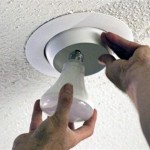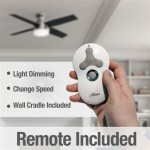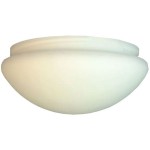Essential Considerations for Cathedral Ceiling Recessed Lighting
Cathedral ceilings, with their towering heights and intricate designs, can present a unique lighting challenge. Recessed lighting, with its ability to provide ample illumination while maintaining a clean and sleek aesthetic, is often the ideal solution. However, to achieve the most effective and visually appealing lighting design, it is crucial to consider several essential aspects.
Size and Shape:
The size and shape of your recessed lights should complement the scale and proportions of your cathedral ceiling. Larger spaces require more substantial fixtures, while smaller areas can benefit from smaller, more discreet lights. Additionally, the shape of the fixtures can contribute to the overall ambience of the space. Round lights, for instance, offer a classic and timeless look, while square or rectangular lights provide a more contemporary edge.
Placement and Spacing:
The placement and spacing of recessed lights are critical to ensuring even illumination throughout the room. As a general rule, lights should be spaced equidistantly across the ceiling, with a distance of approximately 6-8 feet between each fixture. However, the specific spacing may vary depending on the size of the room, the height of the ceiling, and the desired lighting effect.
Beam Angle and Intensity:
The beam angle and intensity of your recessed lights will determine the spread and brightness of the light. Narrow beam lights create a focused beam of light, highlighting specific areas, while wide beam lights provide a more diffused illumination. The intensity of the light should be carefully considered to avoid glare or creating an overly bright or dim environment.
Color Temperature and CRI:
Color temperature and color rendering index (CRI) are two important factors that influence the quality of light emitted by recessed fixtures. Color temperature refers to the perceived warmth or coolness of the light, with warmer temperatures creating a cozy and inviting atmosphere, while cooler temperatures provide a more energetic and functional light. CRI measures the ability of a light source to accurately render colors, with higher CRI values resulting in more vibrant and natural-looking colors.
Dimmability and Control:
Dimmability and control options allow you to adjust the brightness and ambience of your lighting to suit different needs and activities. Dimmable lights can be used to create a warm and intimate atmosphere for gatherings or a brighter, more focused light for tasks. Remote control or smart home integration can provide added convenience and flexibility in controlling your lighting.

Halo H47 6 In Aluminum Recessed Lighting Housing For New Construction Sloped Ceiling Insulation Contact Air Tite H47icat The Home Depot

Reviews For Halo 6 In White Recessed Lighting With Sloped Ceiling Trim Baffle Pg 1 The Home Depot

Sloped Ceiling Recessed Lighting Jdm Electrical Contractors

Need To Upgrade Recessed Lights In My Vaulted Ceiling

Elco 4 Sloped Ceiling Led Baffle Insert El42330w Buyrite Electric

Halo Remodel Ic 6 In Slope Recessed Light Housing The Housings Department At Com

How To Use Insulated Can Lights In Ceilings Diy

Recessed Lighting In Kitchen On Cathedral Ceiling Gimbals Vs Regular

Sloped Ceiling Recessed Lights Really Necessary For Ceilings R Homeimprovement

Vaulted Ceiling Lighting Ideas Creative Solutions
Related Posts








